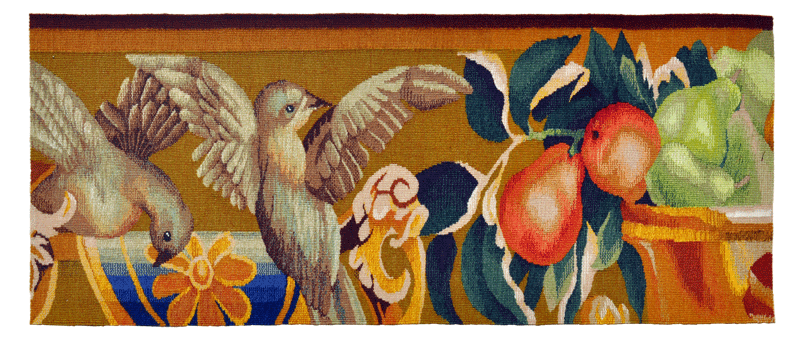
Previous artist Next artist
(...) In tapestry art, in the slowness of the weaving and within technical limitations that mean a challenge for the imagination, I have chanced upon a world in which the rhythm is dictated by my inner tempo. On a world in which space and time are determined by different coordinates, on a world which for me makes possible a change of viewpoint and enables me to measure things by other yardsticks. (...) Ever since I have woven, I have worked alone, which has its advantages. Namely, I have experienced each individual stage of tapestry creation in the most intense way possible. This work, including the disciplined handicraft work, is first and foremost work of an artistic nature: I change and modify things freely and according to my own expectations when I consider it necessary to do so, and whenever I have to decide whether a technical standpoint should take precedence over an artistic one or vice versa.
There are, however, disadvantages also. The realisation of larger projects is extremely slow, since the process is concentrated in one pair of hands. There is something even more problematic: working by oneself precludes the possibility of a dialogue that can facilitate the discussion of different ideas, enabling the participants to seek in all the work the essence of tapestry weaving, and to find it also. As in other areas of life, too, group work in tapestry creation means enrichment, in that – as Jean Lurçat has said – it serves the good of works under preparation on the basis of mutual esteem and trust.
When I had the opportunity to work as part of the team, I accepted it immediately. For me, as someone accustomed to realising her own ideas completely freely, a project means accommodation to the approach and manner of working of a tapestry artist who, as in the present case also, has to weave a design that has been given. The relegation of artistic freedom into this conscious background has further increased my respect for handicrafts.
In a sense, the task received may seem strange; indeed, some are inclined to deal with it anecdotally. I, however, should like to interpret tapestry art as a claiming or reclaiming of nomadic art, since tapestry was a nomadic art which played a significant role in the exchange of cultural, artistic and intellectual values when today’s Europe was born. From the contribution it has made, it must now ask back a small part and get itself recognised as a sustainable genre. It would be good if the migration of our ideas and programmes could be realised on the professional-artistic and handicraft levels, too.
